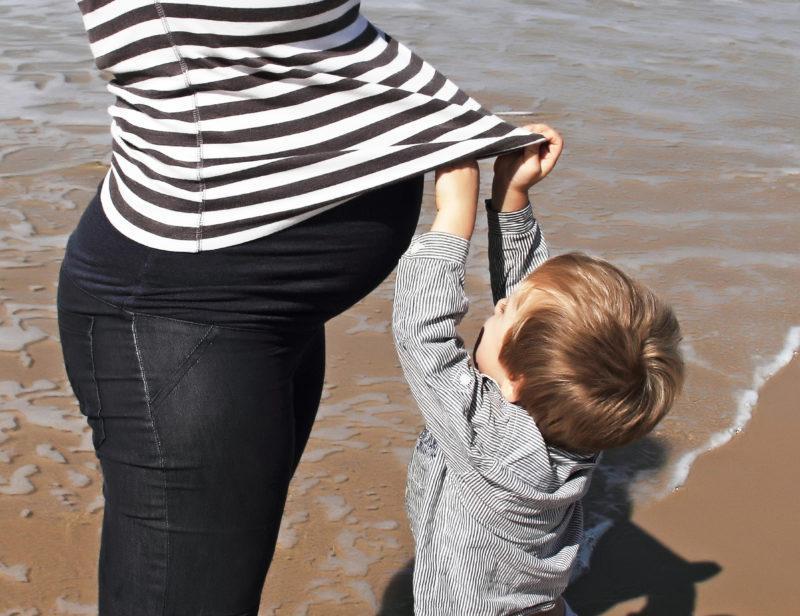
How to monitor your baby’s movements
Monitoring your baby’s movements is important for two reasons. Firstly, monitoring the movements helps ensure that all is well with the baby in the womb. Secondly, the parents get to know their baby and make space for a new person in their life.
In addition to your own physical wellbeing, it’s also important to give the baby space in your life and listen to the baby’s signals.
The maternity clinic states that the baby’s earliest movements can be felt during the 18th to 24th weeks of pregnancy. At that point they are still just very small touches.
“First-time mothers usually feel the baby’s movements a little bit later, because they don’t yet recognise the first light touches as the baby’s movements”, says nurse Irmeli Pitkämäki from Kuusamo’s maternity clinic.
After the 30th week of pregnancy you should monitor the movements daily. The mother shouldn’t worry too much about tracking the movements, but it’s a good and pleasant way to monitor your pregnancy. The mother feels about 85 percent of all the baby’s movements. The baby’s movements consist of stretching and a little exercise for the arms and legs.
“When the mother is moving about during the day, the baby rests and enjoys itself. In the evenings, when the mother stops, the baby gives signals of itself by moving more”, Pitkämäki explains.
Babies normally move several times per hour and occasionally have rests of about half an hour, during which they sleep.
“The movements don’t always just feel good. Sometimes the baby might knock between the ribs so that the surface of the mother’s stomach is sensitive to touch”, Pitkämäki says.
This is normal too. You can discuss all the sensations at the maternity clinic, at home and with friends.
Each baby moves in a different way.
Counting the movements is important early interaction
Each baby moves in a different way. “Oh, she has that kind of a temperament!”, the parents may think.
“By listening to the movements, the parents are making space for the baby in their life. It can mean speaking to the belly and stroking it. They become sensitive to the baby and ask how it’s doing”, Pitkämäki says.
Tracking the movements is a pleasant activity to do together with your partner. It’s important for the partner to also become involved with the pregnancy and the relationship with the baby.
The maternity clinic or hospital will help with your concerns
A healthy mother doesn’t have to constantly be afraid that the baby will stop moving. However, you can always contact the clinic if you are concerned about yourself or the baby’s condition.
“If you feel that things aren’t quite normal, we will invite you to the clinic to talk with us and possibly listen to the baby’s heartbeat together”, Pitkämäki says.
Lack of fetal movement can be caused by the baby being in distress, for example a lack of oxygen or growth disorder. Lack of movement can also be a sign of the mother’s illness, such as liver dysfunction, high blood pressure or gestational diabetes. In late pregnancy, pre-eclampsia, or toxemia of pregnancy, can cause lack of fetal movement. However, you cannot cause these issues yourself.
“What you do to yourself you also do to your baby. In addition to your own physical wellbeing, it’s also important to give the baby space in your life and listen to the baby’s signals”, Pitkämäki says.
A healthy mother doesn’t have to constantly be afraid that the baby will stop moving.
HOW TO MONITOR YOUR BABY’S MOVEMENTS
- Lie down on your side in the evening and write down the movements you notice during an hour. You should feel at least 10 movements during the hour.
- All clearly separate motions can be counted as movements, but not hiccups, however. Hiccups feel like rhythmic tapping in the belly.
- If there are less than 10 movements during an hour, lie down on your side again after one or two hours to count the movements for an hour. You can drink some juice and wake the baby up by gently tapping your belly.
- If there are still less than 10 movements in an hour or they are only weak, call the hospital’s delivery ward immediately regardless of the time of day.
Read more about monitoring the baby’s movements on the Terveyskylän Naistalo website (in Finnish).